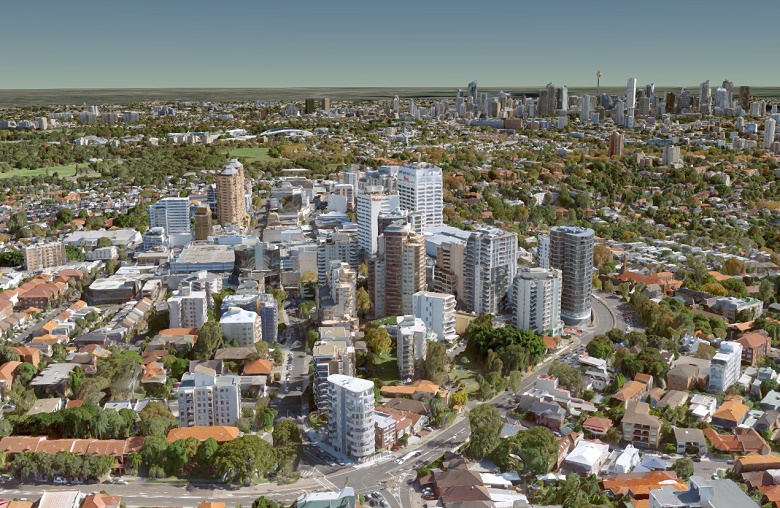
Governments are turning to 3D modelling to plan urban spaces as federal planners raise concerns about pressures on Australia’s infrastructure.
Located in the dense eastern suburbs of Sydney, Waverley Council is one of a growing number of local governments experimenting with new technologies to improve urban planning.
Since 2013, the council has been using a 3D modelling system to help guide strategic planning and development assessments – recently taking on new software to allow more advanced modelling.
The technology enables the council to map specific areas in 3D to realistically visualise developments in the context of the surrounding urban environment.
Utilising 3D modelling to visualise the impacts of developments has enabled the council to better manage planning proposals in line with community expectations, to ensure that the liveability of the area is retained, says Peter Monks, director of Waverley Futures.
“A model that shows what a development looks like in terms of height, overshadowing, privacy or loss of view corridor is useful to get a better appreciation of what is an appropriate standard to maintain a liveable neighbourhood,” he tells Government News.
Mr Monks says 3D modelling has allowed the council to manage the pace of development by assessing the suitability of certain proposals.
The local government also utilises the modelling to test the desirability of certain prospective public works by visualising park and street landscapes with details such as tree or street furniture, and using modelling to promote the projects to the community, he says.
“The 3D visualisation process is a really powerful tool to help communities understand what changes will look like,” Mr Monks says.
Leveraging 3D modelling is also useful to give councils a sense of the capacity of a certain area to take on more development.
“For a council that is looking at strategic growth it would be very useful to do modelling to see what sort of yield you can get in an area,” he says.
‘New approach’ needed
This approach based on the use of 3D modelling could help governments to solve the current disparity between urban growth and infrastructure capacity, says Shane Preston, executive at Nearmap, an aeriel imagery technology company.
Mr Preston says 3D mapping can enable city planners to visualise the impacts of growth on urban spaces.
A new approach to planning based on this imagery is needed for the government to ensure spaces remain liveable in the context of forecast population growth, he argues.
Mr Preston points to a report from Infrastructure Australia last month that warned infrastructure in Australia’s cities is not keeping pace with population growth.
The Planning Liveable Cities report found that Australia is “playing catch up” in delivering infrastructure to support population growth, noting the rate of housing developments outpacing infrastructure delivery.
The report recommended developing an evidence base to understand the local spatial impacts of population growth.
Mr Preston says the Infrastructure Australia report highlights the opportunity for 3D cityscapes to “revolutionise long-term strategic planning.”
He says 3D mapping can allow governments to better sequence infrastructure in the context of population growth by visualising growth in certain spaces, and analysing the impact this would have on, for example, lighting, transport and green space.
“Better anticipation and more efficient planning for new infrastructure is certainly important, but what is also needed is a new approach to planning; an approach that focuses on the long-term liveability of our cities rather than short-term wins,” says Mr Preston.
Comment below to have your say on this story.
If you have a news story or tip-off, get in touch at editorial@governmentnews.com.au.
Sign up to the Government News newsletter.
One thought on “Mapping liveable cities of the future”
Leave a comment:
Most read
Scathing report finds little has changed at PwC
Inquiry to consider how federal govt can address councils’ sustainability issues
‘Local’ procurement turns out not to be so local, committee hears
Qld council welcomes progress on massive battery system
Another report finds local government falling down on cyber security
Great article. Readers may also be interested in the activities of the Australasian BIM Advisory Board (ABAB). Late last year, ABAB released practical material to support a consistent approach to the adoption of digital technology in the built environment. Materials can be downloaded free of charge at: http://www.abab.net.au
Regards